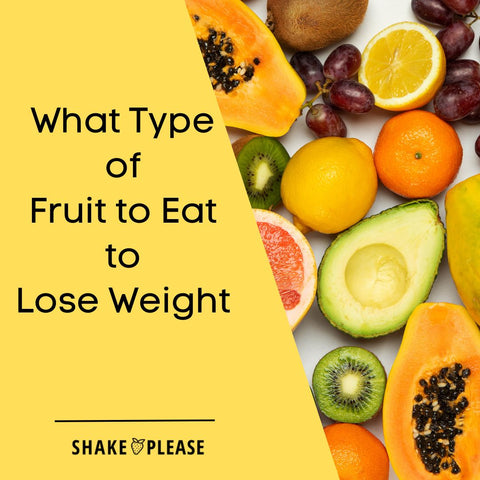
One of the challenges faced by patients after jaw surgery is finding suitable foods that won't require chewing.
Being that jaw surgery is such a significant procedure it will require careful recovery and dietary considerations.
This article aims to provide you with valuable tips, delicious recipes, and expert advice on following a no chew diet after jaw surgery.
By following these recommendations, you can avoid weight loss and ensure a smooth recovery process.
Avoid Weight Loss After Jaw Surgery with No Chew Foods
After jaw surgery, it's crucial to maintain a nutritious diet to support your body's healing process.
However, the inability to chew can make it difficult to consume necessary calories and nutrients. To avoid weight loss, it's important to focus on foods that are easy to consume and require minimal or no chewing including protein shakes or smoothies.
What to Eat After Jaw Surgery
When it comes to a no chew diet after jaw surgery, soft and liquid foods are your best friends.
Opt for foods that are easily mashed or blended, such as cooked vegetables, mashed potatoes, and pureed soups.
Incorporating protein-rich foods, like Greek yogurt, cottage cheese, and soft tofu, is also essential for your recovery.
You can also enjoy soft fruits like bananas and avocados, which provide essential vitamins and minerals.
Additionally, try incorporating protein smoothies into your diet as they are easy to consume and can be packed with a variety of nutrients.
We will share some delicious smoothie recipes later in this article.
Easy and Delicious Smoothie Recipes for a No Chew Diet
Smoothies are an excellent option for those following a no chew diet after jaw surgery.
They are not only easy to prepare but also allow you to incorporate a wide range of nutrients into your diet. Here are three delicious smoothie recipes to get you started:
1. Banana-Berry Blast
Ingredients:
- 1 ripe banana
- 1 cup mixed berries (strawberries, blueberries, raspberries)
- 1 cup almond milk
- 1 tablespoon honey (optional)
- Ice cubes (optional)
Instructions:
- Peel the banana and place it in a blender.
- Add the mixed berries, almond milk, and honey (if desired).
- Blend until smooth and creamy.
- If desired, add ice cubes and blend again.
- Pour into a glass and enjoy!
2. Tropical Paradise
Ingredients:
- 1 cup frozen mango chunks
- 1 cup pineapple chunks
- 1 cup coconut milk
- 1 tablespoon chia seeds
- 1 tablespoon shredded coconut (optional)
Instructions:
- Place the frozen mango chunks, pineapple chunks, coconut milk, and chia seeds in a blender.
- Blend until smooth and creamy.
- If desired, sprinkle shredded coconut on top.
- Pour into a glass and indulge in the tropical flavors!
3. Green Goddess
Ingredients:
- 1 cup spinach
- 1 ripe pear
- 1 cup almond milk
- 1 tablespoon almond butter
- 1 tablespoon honey (optional)
Instructions:
- Rinse the spinach thoroughly.
- Peel the pear and remove the core.
- Place the spinach, pear, almond milk, almond butter, and honey (if desired) in a blender.
- Blend until smooth and vibrant green.
- Pour into a glass and savor the refreshing taste!
Foods to Avoid on a No Chew Diet
While there are plenty of delicious options available for a no chew diet, it's important to be aware of foods that should be avoided during your recovery period.
These include hard and crunchy foods, tough meats, raw vegetables, and sticky foods like caramel or taffy. These foods can put strain on your healing jaw and impede the recovery process.
Stick to soft and liquid foods to ensure a smooth recovery.
Alternative Options for Protein Intake on a No Chew Diet
Protein is an essential nutrient for healing and recovery after jaw surgery. While it may be challenging to consume protein-rich foods that require chewing, there are alternative options available.
Consider incorporating protein shakes, protein powders, and liquid nutritional supplements into your diet. These can provide the necessary protein intake without the need for chewing.
Consult your healthcare provider or a registered dietitian for specific recommendations based on your individual needs.
Tips for Preparing Meals on a No Chew Diet
Preparing meals on a no chew diet can be a daunting task, but with a few helpful tips, it can become more manageable. Here are some suggestions to make meal preparation easier during your recovery:
- Plan your meals in advance: Create a meal plan for the week, ensuring you have a variety of nutritious options available.
- Batch cook and freeze: Prepare larger quantities of soft foods and freeze them in individual portions for quick and easy meals throughout the week.
- Invest in a blender or food processor: These kitchen appliances will be your best friends during your recovery. They make it easy to puree, blend, and mash foods to the desired consistency.
- Experiment with seasonings and spices: Since you may be limited in texture, get creative with flavors. Add herbs, spices, and low-sodium sauces to enhance the taste of your meals.
Nutritional Considerations During the Recovery Period
While following a no chew diet, it's important to maintain a balanced and nutritious intake of essential nutrients. Consider incorporating the following foods to ensure you're meeting your nutritional needs:
- Soft fruits and vegetables: Avocados, bananas, cooked carrots, and mashed sweet potatoes are excellent options.
- Protein sources: Greek yogurt, cottage cheese, soft tofu, and protein shakes will provide the necessary protein intake.
- Healthy fats: Incorporate sources like avocado, nut butters, and olive oil to support your body's healing process.
- Calcium and vitamin D: Consume milk alternatives fortified with calcium and vitamin D or take supplements as recommended by your healthcare provider.
THE ULTIMATE GUIDE TO SOFT FOODS: WHAT TO EAT WITH INVISALIGN
Expert Advice on Maintaining a Healthy Diet After Jaw Surgery
We reached out to Dr. Sarah Thompson, a renowned oral and maxillofacial surgeon, for her expert advice on maintaining a healthy diet after jaw surgery.
According to Dr. Thompson, "A no chew diet can be challenging, but it's crucial to prioritize nutrition during the recovery period.
Consult with a registered dietitian who can guide you in making appropriate food choices and help you meet your nutritional needs."
Dr. Thompson also emphasizes the importance of patience and gradually reintroducing chewable foods.
She advises, "Once your healthcare provider gives you the green light, slowly reintroduce soft foods that require minimal chewing. This will help rebuild your jaw strength and improve your overall chewing ability."
Coping Strategies for Dealing with Cravings on a No Chew Diet
Following a no chew diet after jaw surgery can be mentally challenging, especially when cravings for your favorite foods arise. To cope with these cravings, consider the following strategies:
- Find alternative flavors: Experiment with different seasonings and spices to create dishes that mimic the flavors of your favorite chewy foods.
- Explore new textures: Focus on exploring new textures in your soft and liquid diet. Try pureed soups, creamy puddings, and smooth custards for a change in texture.
- Stay hydrated: Sometimes, cravings can be mistaken for thirst. Ensure you're drinking enough fluids throughout the day to stay hydrated and curb unnecessary cravings.
- Seek support: Reach out to friends, family, or support groups who have undergone similar procedures. They can offer advice, share recipes, and provide emotional support throughout your recovery journey.
MEAL REPLACEMENTS FOR LUNCH TO BOOST YOUR PRODUCTIVITY AND HEALTH
Conclusion: Embracing the No Chew Diet for a Speedy Recovery
Following a no chew diet after jaw surgery is essential for a smooth and speedy recovery.
By incorporating soft and liquid foods, enjoying delicious smoothies, and following expert advice, you can ensure proper nutrition without compromising your healing process. Remember, patience is key during this period, and gradually reintroducing chewable foods under professional guidance will help you regain your normal eating habits.
Embrace the no chew diet as an opportunity to explore new flavors and textures while nurturing your body on its path to recovery.
We hope this article has provided you with valuable insights and practical tips for your no chew diet after jaw surgery.





